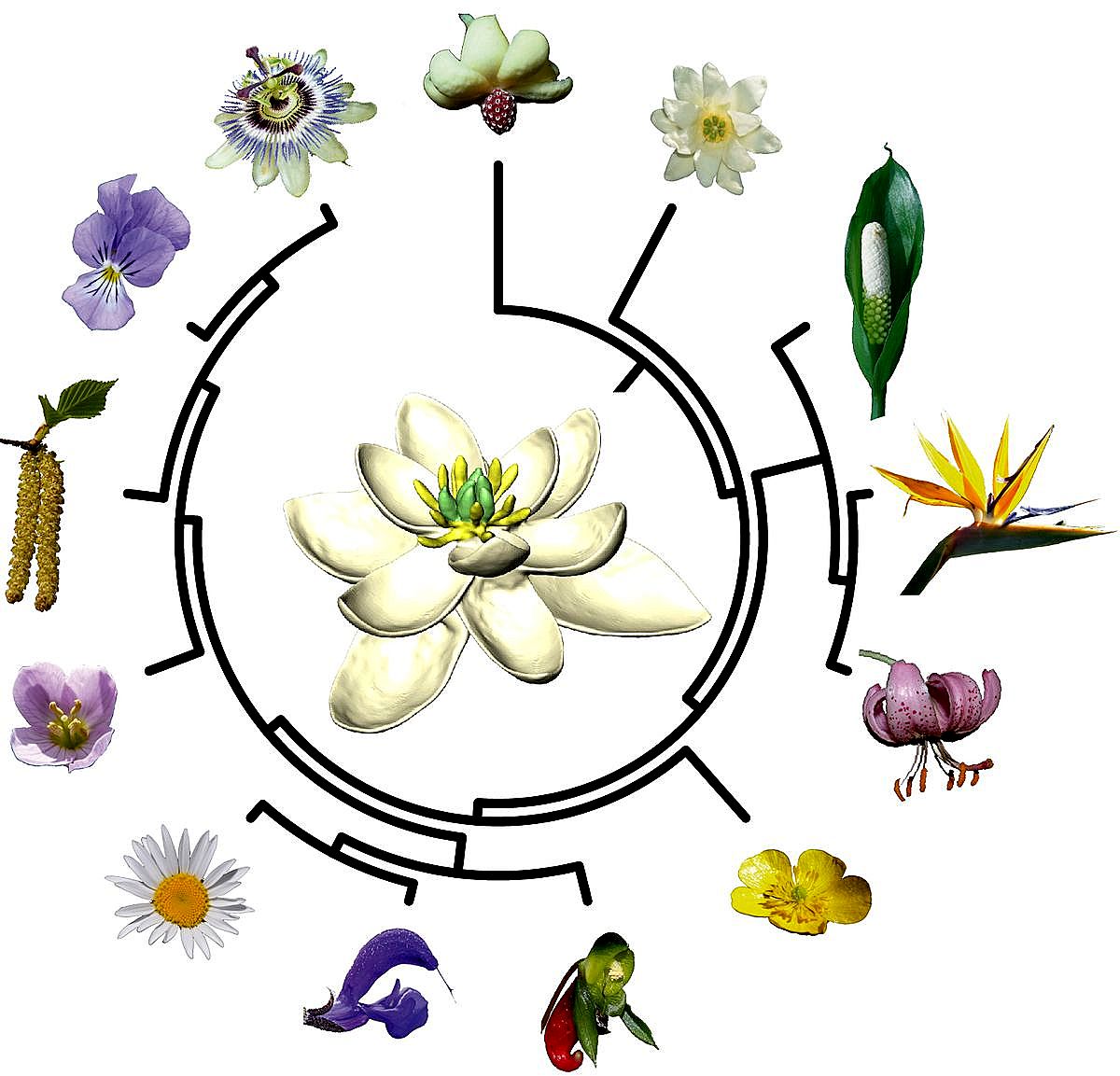The First Flower
Evolutionary Form of the first flower (credit: Hervé Sauquet & Jürg Schönenberger)
The biodiversity of the Earth's flowering plants is mind boggling and new species are still being discovered every year. Anyone who has ever looked at a lily, rose, orchid, daisy, or cactus when in bloom must be impressed by the variety of forms, colors, and beauty.
Could all this diversity have arisen from a common ancestral bloom? Botanical research indicates this may have been the case beginning ~140 million years ago during the Cretaceous Period. Writing in Nature Communications, researchers at the Universities of Paris and Vienna applied molecular biology tools to investigate the evolutionary relationships of plants (phylogenetics). Combining the results with some palaeo-botanical discoveries allowed them to reconstruct the 'first flower'. Stating in their article:
"a key question in plant biology remains the origin of angiosperms (flowering plants) and of their most defining structure, the flower."
To address this question they used three approaches:
1) investigated museum fossils in an attempt to identify the closest extinct flowering plant relatives; 2) review the body of developmental genetics for the reproductive structures of living flowers and cone-bearing plants (gymnosperms); and 3).utilize a massive data set and analytical methods to infer the structure of ancestral flowers by using the distribution of traits among modern flowers, estimates of their relationships, and evolutionary models of their forms (morphology).
The combined methods allowed the European scientists to gather clues into the origin and diversification of flower forms and estimates of what they were like at key points in time. Using graphic tools, including a form relationship dendrogram, the data and analysis was visualized in beautiful botanical illustrations. The first predicted form had a waterlily-like flower.

Circular dendrogram of flowering plants' evolution from 1st ancestor (credit: Nature Communications)
The French and Austrian researchers concluded by saying:
"our work provides a novel picture of the flower of the most recent ancestor for all living angiosperms and the earliest steps in flower form diversification. It is a major development in understanding the origins of floral diversity and evolution in flowering plants, but more work will be required to reconstruct the evolutionary steps that gave rise to the flower itself."
For this and many other reasons, worldwide conservation of plants should take on new meaning since the picture isn't complete. This reconstructed model of the ancient flower contains both male and female structures in the same flower as do most modern plants. However, a rare tree species was discovered in New Caledonia, the Amborella, that has unusual male and female flower characteristics separately displayed on the plant indicating an earlier stage in floral evolution.
Who knows where the next botanical breakthrough may be hiding. Perhaps, a plant on some remote mountain peak will help to fill in more of the puzzle. Its flower might be quite beautiful as well.
WHB